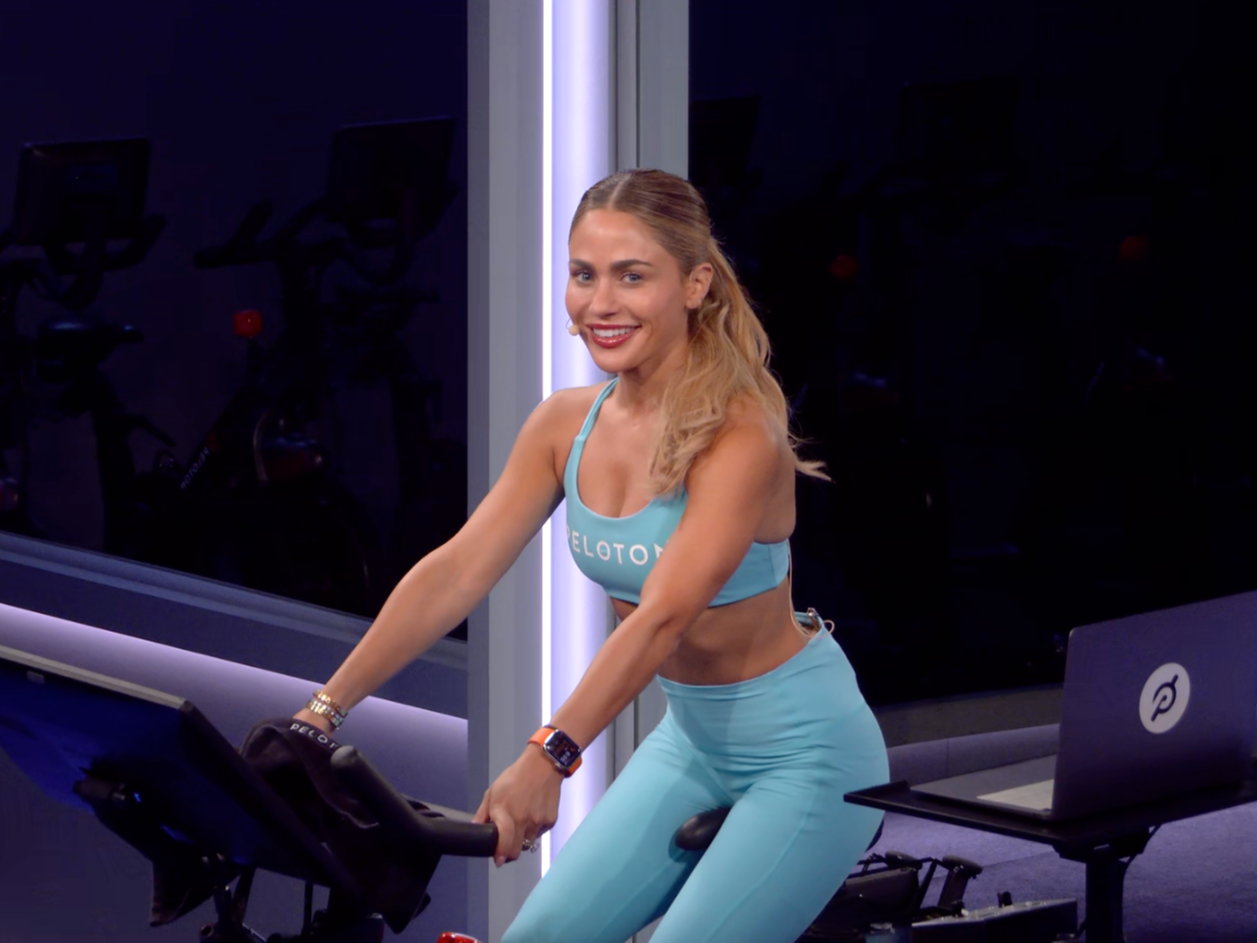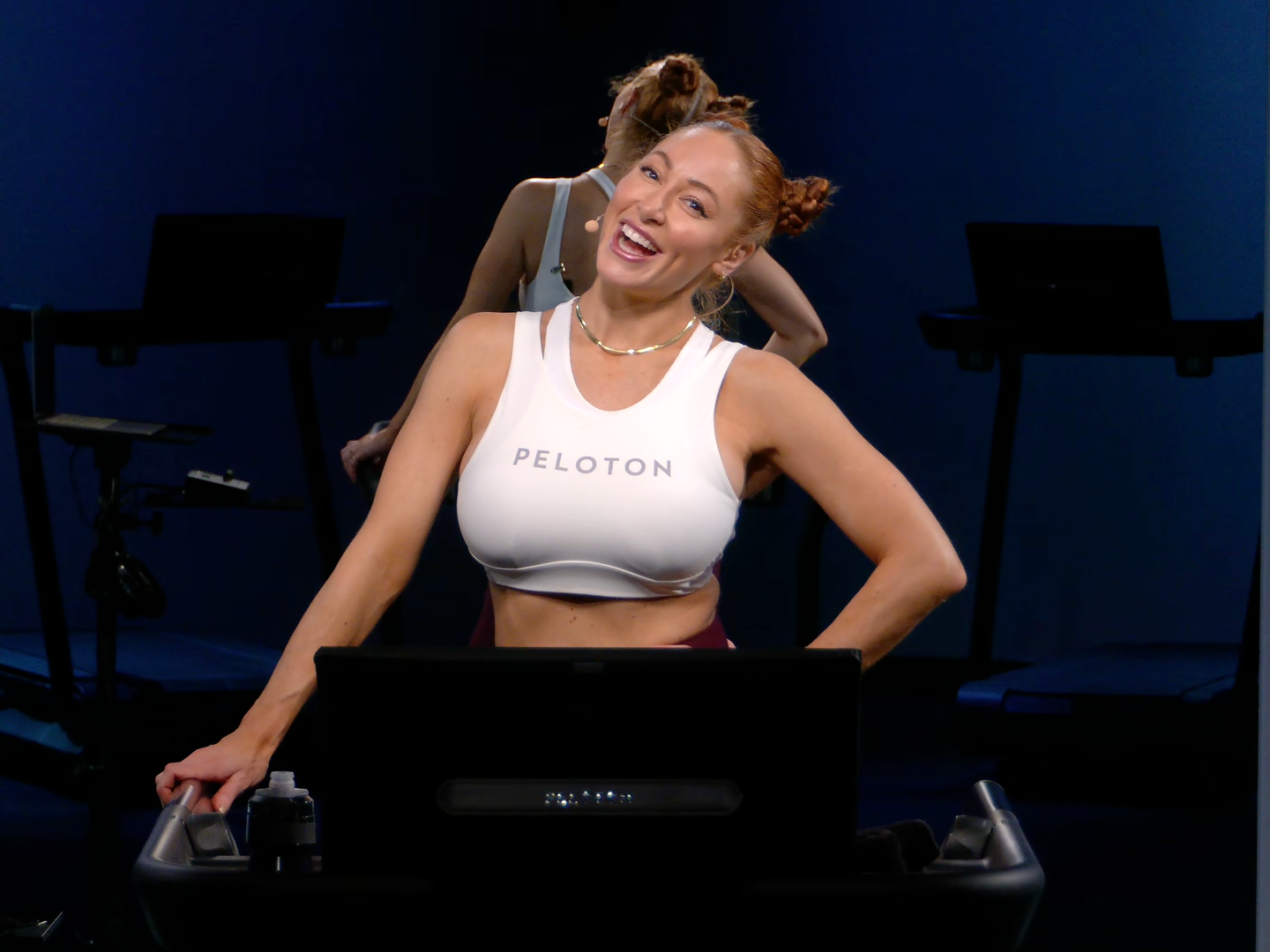
Cycling vs. Running: Which Is Better for Improving Fitness?
We break down the pros and cons.
By Team Peloton•
The Benefits of Cycling
The Benefits of Running
Is Cycling Harder Than Running?
Cycling vs. Running: Which is Better Based on Your Goals?
The Verdict on Cycling vs. Running: It’s a Draw
In It for the Long Run (or Ride)
If you’re looking to add more cardio to your routine and build stamina, you’ve probably asked yourself: Which is better: cycling or running?
Both are among the most popular and well-studied aerobic exercises in the world. The short answer is that both cycling and running have their advantages, depending on your individual fitness needs.
Cycling and running both get your heart pumping and allow you to burn calories and build strength. Running may burn more calories than cycling, but running is also a higher-impact workout than cycling and, therefore, may be more physically challenging for some.
However, there’s more to the comparison between cycling and running than that. So, let’s take a closer look at the benefits of each activity, so you can choose which one will help you meet your fitness goals.
The Benefits of Cycling
Because cycling is a low-impact exercise, it’s a great activity for those just starting their fitness journey, says Olivia Amato, NASM-certified trainer, and Peloton Bike and Tread instructor.
Cycling is an especially powerful alternative to running if you have a knee or leg injury and need to avoid high-impact activities. Other benefits of cycling include that it can:
Burn some serious calories. High-intensity cycling is a great way to help you meet your health and fitness goals. It burns an estimated 488-738 calories per hour. Studies have shown that incorporating sprint and strength training with regular cycling can temporarily boost metabolism levels while building muscle, allowing you to burn even more calories.
Help strengthen your legs. By targeting your quads, glutes, hamstrings and calves, cycling not only strengthens your leg muscles, but also improves overall function in your lower body.
Improve cardiovascular health. According to one study, indoor cycling had a positive effect on total cholesterol, boosting HDL (good) cholesterol levels while lowering LDL (bad) cholesterol and triglyceride levels.
Boost your mental health and brain power. Cycling has been shown to improve cognitive functioning and ease feelings of stress, depression, or anxiety by triggering the release of your body’s own natural painkillers and mood-enhancing biochemicals, according to research in the journal PLoS One.
Improve your balance, posture, and coordination. Whether cycling indoors, like on a Peloton Bike, or cycling outdoors, it forces you to stabilize your body, thus improving your overall balance, coordination, and posture. All of this can help decrease your risk of injury as you age.
Help prevent or manage some health concerns. By cycling regularly, you avoid a sedentary lifestyle and the health concerns that often accompany it. Research shows that regular exercise can reduce the risk of stroke, heart attack, and high blood pressure. In a 2021 study in JAMA Internal Medicine, researchers found that cycling was associated with a 35 percent lower mortality risk among people with diabetes.

The Benefits of Running
One of the biggest benefits of running is that it utilizes more of your muscles than cycling, which, in turn, increases your energy burn to the tune of 566-839 calories per hour. Plus, while running works your legs, it also forces your core and upper body to join in on the action. Other benefits of running include that it:
Puts “good stress” on your body and helps prevent bone loss and osteoporosis. One study found that stress-bearing physical activity, such as running, protects your musculoskeletal system more than exercise that is not weight-bearing, such as cycling.
May reduce harmful belly fat. High-intensity aerobic training, including variable running, uphill running, sprinting, or high-intensity interval training (HIIT), has been shown to significantly increase your metabolism and reduce belly fat. Excess visceral fat in the belly region can put you at a greater risk for certain health issues. The reduction of body fat lowers your risk of developing heart disease.
Helps strengthen your heart so that it can pump more oxygen in your body. Cardio exercise, such as running and cycling, teaches your heart to pump even more efficiently before, during and after your workouts. Better circulation helps to heal wounds faster, keeps your brain sharp and even gives your complexion a more refreshing, natural look.
Helps tone your muscles. Running works your whole body and burns more calories. As such, you can develop a well-toned body by running for a long period of time without reaching muscle fatigue. Or you can run slower for longer stretches to help you achieve that toned look.
If you are new to running, Peloton instructor Jess King recommends that you ramp up the intensity gradually. For example, beginner level classes start at just 15 minutes, and you can work your way up, or even start with walking classes. There are a variety of classes to choose from on the Peloton App, including walk-runs, longer fun runs, and even longer interval classes.
In welcoming new students into her Tread class, King often encourages them to channel the curiosity and sense of adventure of a beginner mindset. This way of thinking sustained her through her own training. While the workouts may be tough and even uncomfortable at times, the results are well worth it. Because of this, many newbies in her classes are able to stick with their routines.

Is Cycling Harder Than Running?
Both cycling and running are excellent forms of aerobic exercise, particularly if you want to improve your cardiovascular health and stay in shape. They are especially effective at optimizing the function of your heart and lungs, while strengthening muscles and building endurance.
In terms of exertion, running generally requires more effort than cycling since a bike carries some of the workload for you. On a bike, your bodyweight is supported by the saddle. But when you run, you have to support the weight of your body every step of the way. Also, you can recover in downhills while cycling, whereas you have to work harder while running due to negative G-forces.
From a cardiovascular perspective, running is tougher than cycling because your heart and lungs need to provide more oxygen and energy to more muscles at once, whereas cycling involves mainly your leg muscles. Then again, those muscles are pushed to their fatigue level with intense cycling. However, the consensus is that cycling is gentler on the body, and you may be able to do it longer and faster than you can run.
Cycling vs. Running: Which is Better Based on Your Goals?
If you have specific goals in mind, read on to find out which activity can better help you best accomplish your health and fitness goals:
Increasing Endurance and Stamina
Your endurance (how long you can perform a specific activity) and your stamina (how long you can last, at max effort) can both be improved by gradually increasing your speed, distance, as well as the length of your ride or run. Endurance and stamina are intertwined—improving one helps the other. Think of endurance as how long/much you can endure, whereas stamina is how long you can excel. So, the better your underlying endurance—which depends on both your muscles and cardiovascular system—the more stamina you’ll have.
Both cycling and running can improve your endurance and stamina. But, to really achieve what you want to, stamina-wise, nothing beats cycling. You’ll be able to sustain maximum pedaling effort easier and for longer periods of time on a bike than you could running.
Improving Muscle Strength
Once again, both cycling and running can help you build muscle strength in your legs. They just do it differently. Resistance training is what makes muscles get stronger. With cycling, you’re pushing hard against those bike pedals with every downward and upward stroke, which makes cycling better for building leg muscles. Running, on the other hand, will strengthen and tone your leg muscles, but you’ll experience a leaner result due to how the leg muscles are engaged while running and from the impact of each footfall.
Being Healthy & Fit
You’ll get an excellent cardiovascular workout from cycling and running alike. These types of aerobic activities can help keep your blood pressure and blood sugar levels in check, which is good for your heart, lungs and can dramatically improve the length and your quality of your life. When it comes to burning calories, though, running takes the lead because it puts more muscles to use, burning through more of your energy stores. Your calorie-burn rate will depend on your weight, metabolism, and how intense of a ride or run you’re going for.
The Verdict on Cycling vs. Running: It’s a Draw
Since neither cycling nor running stands out as a better option than the other, you should choose whichever one fits your lifestyle. That way, you’ll enjoy it and stick with it regularly. Of course, you can also switch between the two to realize the benefits of each activity or, better yet, do both.
However, if you are looking to begin a regular cardio routine, but still unsure which one is best for you – especially if you are seeking specific results, like calorie burn or muscle toning – you’ll find live and on-demand classes through the Peloton App helpful in finding a routine tailored to your precise needs.
In It for the Long Run (or Ride)
Taking place entirely on the Peloton Tread, our running classes include beginner and low-intensity runs, hills, speed race prep, heart rate zone runs, and music-driven fun runs. Peloton offers the most immersive training experience on your own time and in the comfort of your own home.
As for our studio cycling sessions, Peloton offers daily live classes with elite master instructors, and thousands more classes on-demand. There are a variety of workouts for every rider that you can filter by class type, length, music, intensity level, instructor and more.
Try our on-demand Peloton Tread and Bike classes free for 30 days on the Peloton App. For more information about our vast array of total body training resources, visit Peloton online.
This content is for informational and educational purposes only and does not constitute individualized advice. It is not intended to replace professional medical evaluation, diagnosis, or treatment. Seek the advice of your physician for questions you may have regarding your health or a medical condition. If you are having a medical emergency, call your physician or 911 immediately.
Level up your inbox.
Subscribe for a weekly dose of fitness, plus the latest promos, launches, and events.
By providing your email address, you agree to receive marketing communications from Peloton.
For more about how we use your information, see our Privacy Policy.


